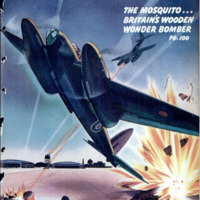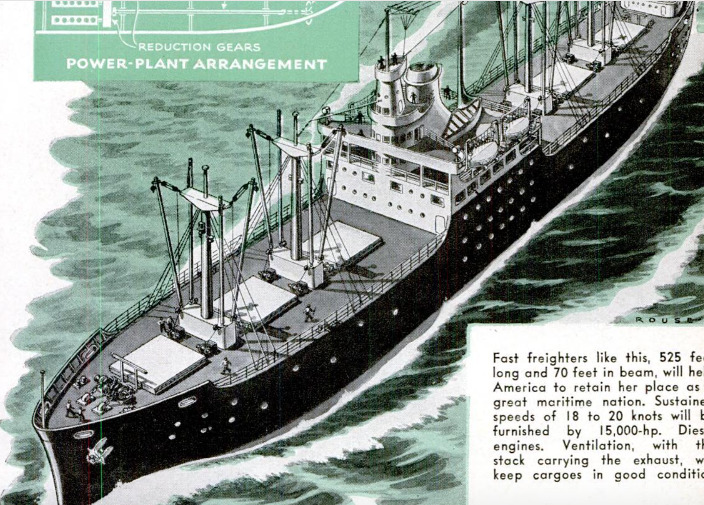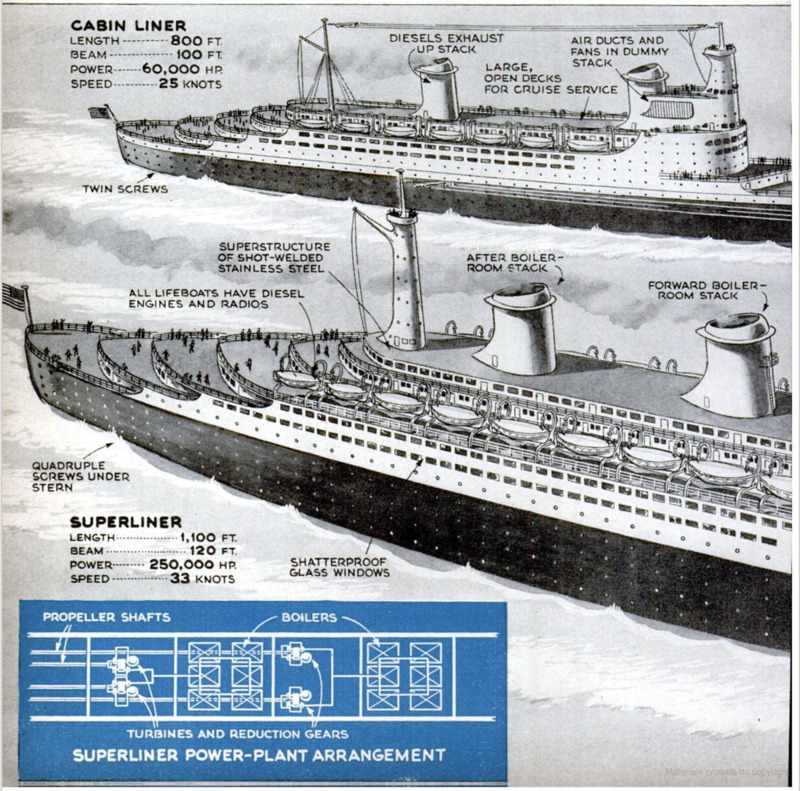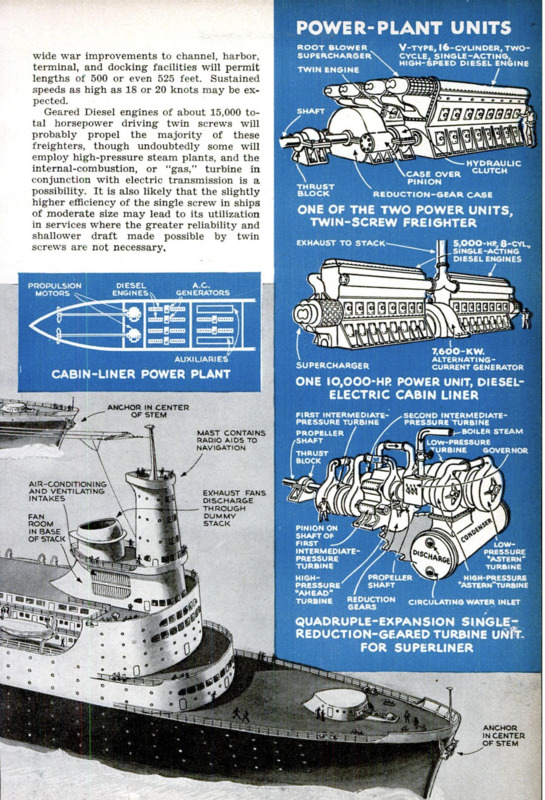U. S. Civilian Fleet
Item
-
Title (Dublin Core)
-
U. S. Civilian Fleet
-
Article Title and/or Image Caption (Dublin Core)
-
Ships for the Seas of Peace
-
extracted text (Extract Text)
-
ALONG with being the leading industrial pow-
er at the close of the war, the
United States will also be a
great maritime nation. With
a fleet of medium-sized cargo
vessels, tankers, and cabin
liners as fine as or finer than
any others afloat, our early
postwar merchant fleet will
lack only express superliners and will be
fitted to carry its share of trade in the first
days of peace.
To remain a great maritime nation, how-
ever, we must be prepared to construct im-
proved vessels when science and industry
return to normal. At that time materials
and techniques that have been devoted to
the war will enable shipbuilders to turn out
vessels far surpassing those now in exist-
ence.
The most spectacular and highly publi-
cized merchant ships are the express super-
liners, and if transocean planes do not take
too much of their trade, larger and faster
ones will be built. Those operated before
the war were of over 50,000 tons. Their
speed, averaging 28 knots on a crossing,
made it possible to maintain weekly serv-
ice between New York and Europe with
two ships.
Postwar superliners will be still faster,
but probably will not exceed 32 or 33 knots,
although it is estimated that 35 knots could
be used advantageously to allow longer pe-
riods for victualing, fueling, and cleaning
ship. Over-all length will be kept to 1,100
feet and beam to 120 feet by channel, termi-
nal, and docking limitations.
Propulsion will almost undoubtedly be by
quadruple screws driven by geared turbines.
Pressures as high as 1,200 pounds are likely,
and steam temperatures may be raised by
superheating to as much as 900 degrees
Fahrenheit. Also possible are geared Diesel
engines, Diesel-electric drive, and the re-
cently developed mercury-steam turbo-elec-
tric system.
Cabin liners will suffer much less from
air competition. Larger and more comfort-
able than even the finest of the prewar ships
of this type, they will probably have a length
of 800 feet or more, with docking facilities
in many of the cruise ports visited in the
“off season” of the North Atlantic service.
The power plant needed for their maximum
speed of 24 or 25 knots will perhaps not ex-
ceed 60,000 or 70,000 horsepower, and their
normal sea speed of 21 or 22 knots will be
sustained with considerably less. For this,
geared Diesel engines and Diesel-electric
drive are much more probable than for the
huge power outputs required for a super-
liner capable of over 30 knots.
By far the most important merchant
ships are freighters. The finest yet pro-
duced are possibly the handsome and able
C-3 ships of the United States Maritime
Commission, and new ones will be in all
likelihood a development of this type. World-
wide war improvements to channel, harbor,
terminal, and docking facilities will permit
lengths of 500 or even 525 feet. Sustained
speeds as high as 18 or 20 knots may be ex-
pected.
Geared Diesel engines of about 15,000 to-
tal horsepower driving twin screws will
probably propel the majority of these
freighters, though undoubtedly some will
employ high-pressure steam plants, and the
internal-combustion, or “gas,” turbine in
conjunction with electric transmission is a
possibility. It is also likely that the slightly
higher efficiency of the single screw in ships
of moderate size may lead to its utilization
in services where the greater reliability and
shallower draft made possible by twin
screws are not necessary,
-
Contributor (Dublin Core)
-
W. Mack Angas 8writer)
-
Stewart Rouse (illustrator)
-
Language (Dublin Core)
-
eng
-
Date Issued (Dublin Core)
-
1943-12
-
pages (Bibliographic Ontology)
-
95-97
-
Rights (Dublin Core)
-
Public Domain (Google digitized)
-
Archived by (Dublin Core)
-
Matteo Ridolfi
-
Alberto Bordignon (Supervisor)
 Popular Science Monthly, vol. 143, n. 6, 1943
Popular Science Monthly, vol. 143, n. 6, 1943






